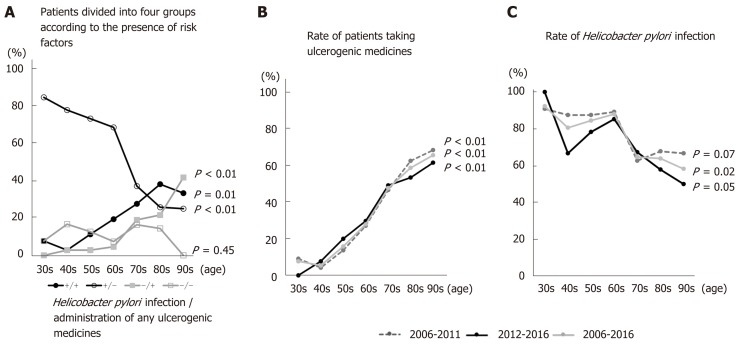Figure 3.
Examination of each ulcerogenic factor according to age. A: Helicobacter pylori (H. pylori) infections were more common in patients in their 30s to 70s. The rates decreased thereafter. However, the rates of H. pylori-positive and medicine-positive ulcers, and those of medicine-induced ulcers, increased significantly with age. Medicine-induced ulcers were most common in those in their 80s. There was no significant change over time in the incidence of H. pylori-induced and medicine-negative, so-called idiopathic, and ulcers. B and C: Rates of H. pylori infection and administration of non-steroidal anti-inflammatory drugs (NSAIDs), antiplatelets, and anticoagulants in 2006–2011, 2012–2016, and 2006–2016. Over time, the use of NSAIDs and antithrombotic drugs increased with age. By contrast, the rate of H. pylori infection during the study period fell with age.

